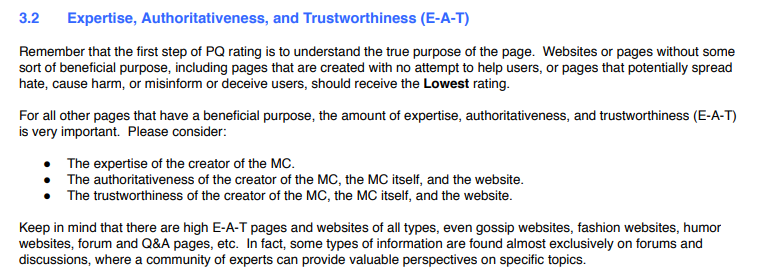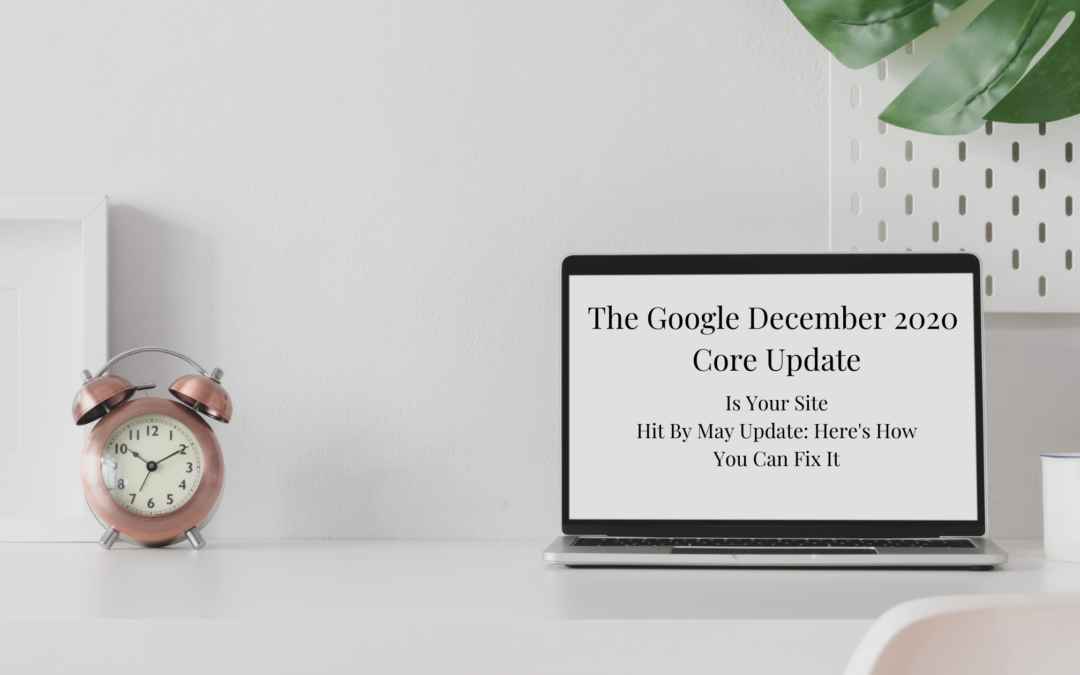Google Core Update – Impacts to Websites
Whenever Google makes a big core update to their services or the search engine, the website owners & the people who work in SEO seems to stop and take a deep breath for a moment as the entire paradigm online realigns itself.
More and more, the search engine giant reshuffles the deck on what makes a website powerful and traffic-attractive versus those that fall off the boat railings into obscurity and the latest Google core update issued on December 1 is no exception.
The latest Google Core Update has gone far beyond just validating the content of websites, it has changed what helps a website get noticed in page rankings and first page positioning.
And that means a lot of website owners are now waking up to the reality that the drop in traffic they are realizing may have a lot to do with Google’s changes.
Website Optimization Was Great, Until It’s Not
The search engine results pages, or SERPs, represent the first page being the golden egg (ideally being on the first page of search results is best). And just about when everyone has the formula figured out, Google rips out the carpet from underneath.

Now, since new Google core update, over-optimized sites are paying a penalty and falling behind in rankings versus large-name brands and those with top domain ownership. So, in essence, Walmart and Target will shove Joe’s Tackle Shop down even more so, even though Joe’s Tackle shop loads 100 times faster than the sloggy Wal-Mart page.
The culprit in the algorithm again seems to be keyword stuffing or loading up search terms far too much per given page.
Basically, a good rule of thumb holds that your website shouldn’t have more than 10 of the same term references per 1,000 words of content. So, if you’re using category page content writing, for example, you’re going to see negative impacts galore.
The content should be natural, informative, and useful, not an in-your-face car sales commercial spin.
The Google Penalty Box
Is your website guilty of Google website design violations? Many people don’t even know what they are and unconsciously end up in the blacklist zone.
These violations include multiple copies of the same blog content, paid guest content, using invisible text to hide visible keyword stuffing, missing web pages or 404 errors, and overuse of HTML link swapping (common in forums).
Get rid of these issues as they are literally a cement block cutting back on your score potential in Google’s ( latest core update ) algorithm.
Your backlinks need to be checked regularly as well. You might think all your links are working fine, but if some relevant sites have dropped a corresponding link back to your site, that’s going to damage your scoring with Google. Losing links can be as bad as having poor content; the algorithm interprets the change as your site not being as interesting anymore versus others with lots of connections
Check Out Your Neighbor Doing Well
Research is your advantage. You may not have a clear idea now what actually works, but Google does. And you can see it for yourself by going into the search engine anonymously and examining which pages are reaching top rank. Examine their structure, content, material, design and link layout.

All of these aspects give you real-time insight into what the latest Google Core Update changes consider top-billing in the new scoring paradigm. Yes, the sites might be your competition but you’re not in school anymore; you can apply some of their great website design ideas to your own website.
Keep It Simple, Stupid
Keep your website’s user experience simple. The UX factor, how hard it is for your readers to interface, gets a direct evaluation from Google’s algorithm now, and it can be painful.

Things like slow-loading browser pages, too many landing sites, too many links out, duplicate content issues, crawl errors, 404s, and more mobile device support can slash and burn your page ranking badly.
Fortunately, all of these things are in your control and repairable very quickly and easily. So, if you just added a bunch of pop-ups, get rid of them and go back to your former website coding that was simpler to read.
Why E-A-T is important
EAT (Expertise, Authoritativeness Trustworthiness) is a concept Google first published in its 2014 edition of SQR (Search quality Guidelines).
Google uses these guidelines (core updates algorithm) during search quality evaluations, in which it hires quality reviewers to manually review, a set of webpages, and submit feedback then, Google uses those feedbacks to improve its algorithm & roll-out the core updates.
Google Says that E-A-T is very important

• E-A-T is not an algorithm.
• There is no E-A-T score.
• E-A-T is not a direct ranking factor.
This is a Fulltime Job Now
If you thought just setting up a good website for search was a one-time effort, latest Google Core Update is here to prove to you that idea is dead wrong.
If your website is not regularly updating its content with new, useful information, it will be tagged as “inactive.” This is bad, very bad. You will drop faster in page rankings than hot ravioli through fresh snow. Again, this is an easy situation to remedy.
Adding blog updates, videos, new photo images and even info-graphics all have the opposite effect, pushing your ranking upwards now.
While it might seem boring, staying on top of Google’s Guidelines for good website design really matters and should be on your weekly to-do list to look for any changes or Latest Google updates.
All the above are regularly included, discussed and detailed by Google, especially with their new algorithm change being launched and active. Again, a lot of the issues are repairable and controllable by how you run your website. But failing to do anything about it leaves your loss in valuable traffic squarely on your company’s shoulders, not that of Google’s latest algorithm.
We help you to gain the momentum you need to move forward. Remember, Evans Alliance is here to help you implement your successful Search Engine Optimization today.


